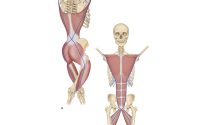Muscle Strength and Mortality in the Oldest Old: A Gradual Link Between Handgrip Strength and Survival
Aging is often accompanied by a decline in muscle strength, which can influence overall survival, particularly in adults aged 90 and older. This study examines the relationship between muscle strength. The results indicate a continuous, inverse relationship between handgrip strength and mortality risk, highlighting the importance of maintaining strength even in advanced age.
Introduction
With the world’s population aging rapidly, understanding factors that contribute to longevity among the oldest old (those aged 90 and above) has become increasingly relevant. Muscle strength is a critical component of physical health that has been linked to mortality in older adults, but previous research has been limited in scope, often suggesting a threshold effect rather than a gradual association. This study aims to clarify whether muscle strength correlates with survival in a graded manner, thereby highlighting potential pathways for interventions in this age group.
Methods
A study from Europe collected data from 1,890 participants aged 90 and older (61.6% women, mean age 91) across 27 European countries and Israel were included. Muscle strength was assessed using handgrip dynamometry, an accessible and reliable method for gauging overall strength. They then tracked these individuals for an average of 4 years to see how muscle strength related to their survival.
What the Study Found
- Those with stronger handgrips tended to live longer. For example, people with handgrip strength in the top 10% were 31% less likely to die over the study period than those with average or below-average strength.
- This pattern held true for both men and women, despite natural differences in strength between the genders. In fact, even after accounting for factors like age, health status, and lifestyle habits, the trend remained strong: greater muscle strength meant better survival odds.
Why Muscle Strength Matters, Even in Your 90s
This study builds on previous research that has connected muscle strength with health and longevity in people over 80. While other studies have suggested that having very low muscle strength increases health risks, this new research goes further, showing that every extra bit of muscle strength can make a difference.
Handgrip strength is widely used in research as a quick, reliable measure of overall muscle health, but it may not capture all the ways muscle strength contributes to health as we age. For example, lower body strength—important for balance and mobility—can decline at different rates, affecting daily activities and fall risk. Multiple types of strength tests and measurements over time could give an even clearer picture of how muscle health connects to long-term survival.
Discussion
This study expands on previous findings by showing a continuous, inverse association between handgrip strength and mortality risk among the oldest old, rather than a strict threshold effect. Previous research conducted in the Netherlands, Belgium, and Brazil suggested a threshold for mortality risk based on low muscle strength. However, limited sample sizes and variation in age cutoffs in these studies made it challenging to establish a graded relationship. The current findings reveal that even incremental increases in strength are linked to lower mortality risk, suggesting that every added kilogram of strength may contribute to improved survival outcomes.
Handgrip strength serves as a widely accepted proxy for overall muscle strength due to its practicality and correlation with other strength measures. However, it has limitations in the oldest old, as it may not fully capture the complex changes in muscle function that accompany aging. For instance, declines in lower limb strength, crucial for mobility and balance, may differ from those in upper limb strength. Future studies could enhance accuracy by incorporating multiple strength measures, such as gait speed and lower limb strength tests, and by taking frequent measurements over time to track changes in muscle function.
The results indicate that muscle strength has an independent effect on mortality beyond other health indicators, such as self-perceived health. Moreover, analyses stratified by sex revealed that both men and women show similar survival patterns associated with muscle strength, reinforcing the importance of strength in both genders despite differences in life expectancy and muscle capacity.
Potential Mechanisms
The mechanisms behind the association between muscle strength and mortality may be multifactorial. Handgrip strength is inversely associated with vascular markers such as arterial stiffness, and improved muscular fitness is linked to the release of beneficial cytokines and myokines that contribute to vascular health. Handgrip strength is also correlated with brain volume and inflammation markers associated with dementia. Additional studies have linked muscle strength with executive function, suggesting that it could serve as a predictor of cognitive impairment and neurodegenerative disease.
Practical and Clinical Implications
The findings support the idea that muscle strength in advanced age is adaptive and can benefit from targeted resistance training, even among the oldest old. Research has shown that interventions, such as resistance and balance training, improve functional outcomes and may reduce healthcare costs in frail elderly populations. While implementing strength training in this vulnerable group requires careful consideration of individual health, risks such as cardiovascular complications, falls, and musculoskeletal injuries can be mitigated through progressive, supervised programs. Starting with low-intensity exercises and gradually increasing load, along with incorporating balance exercises, can enhance physical performance and reduce fall risk.
Conclusion
This study demonstrates a gradual, inverse association between muscle strength and mortality risk in individuals aged 90 and older. The results underscore the importance of maintaining and improving muscle strength at any age, as each incremental increase in strength correlates with reduced mortality risk. These findings have practical implications for designing strength training interventions in advanced age, emphasizing the potential of targeted exercise to enhance longevity and quality of life among the oldest old.


